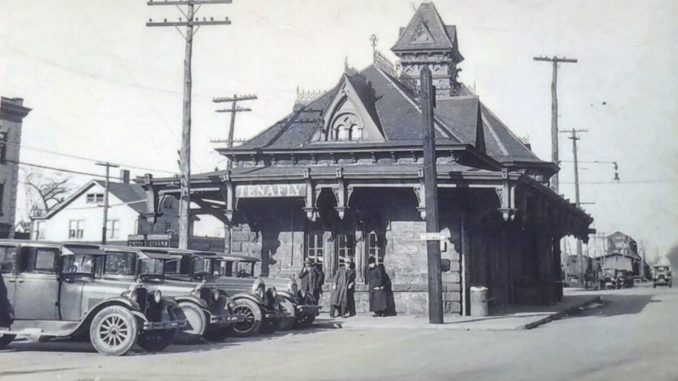

TENAFLY, N.J.—It’s a 1930s winter in this scene that looks at the Tenafly Railroad Station. Just look at those old cars!
Today the Tenafly station stands as a prized historical gem in the midst of a busy suburban town. Yet few people realize just what the railroad once meant to this region. Tenafly’s settlement, like many other Bergen County municipalities, hinged largely on the railroad.
On May 26, 1859, the first train on the Northern Railroad line came down from Piermont, N.Y., southbound toward Jersey City. Originally Englewood and Closter were our only two local stops on the line, but by the turn of the 20th century there were also stations in Tenafly, Cresskill and Demarest, plus two more stops in Englewood.
The trip to New York City had previously taken hours in each direction by horse-drawn wagon and ferry. Isolated from the East Coast’s hub of commerce, the Northern Valley had been sparsely populated and little developed. Land could be purchased for a pittance. The small number of families all knew each other, and farming was their way of life.
With the coming of the railroad, land speculators realized the region’s potential. The man of the house could now commute to New York City by day, while his family could live far from the hustle and bustle, where the water and air were clean, and the vistas unspoiled. Speculators bought up acreage from farmers, subdivided it, and built homes from the railroad depots outward. The price of land increased exponentially. The railroad station was built in 1874, back when Tenafly was a village within Palisades Township. The station was designed and built by Daniel T. Atwood, a New York-based architect, in the High Victorian Gothic style. This was no humble country station—its elegant style was intended to draw an affluent population, who wanted the clean country air along with a side of sophistication.
A new way of life took hold, and Tenafly went from an isolated country hamlet to a bustling suburb. Many wealthy New Yorkers made homes in Tenafly, and elegant mansions dotted the landscape by the late 19th century.
